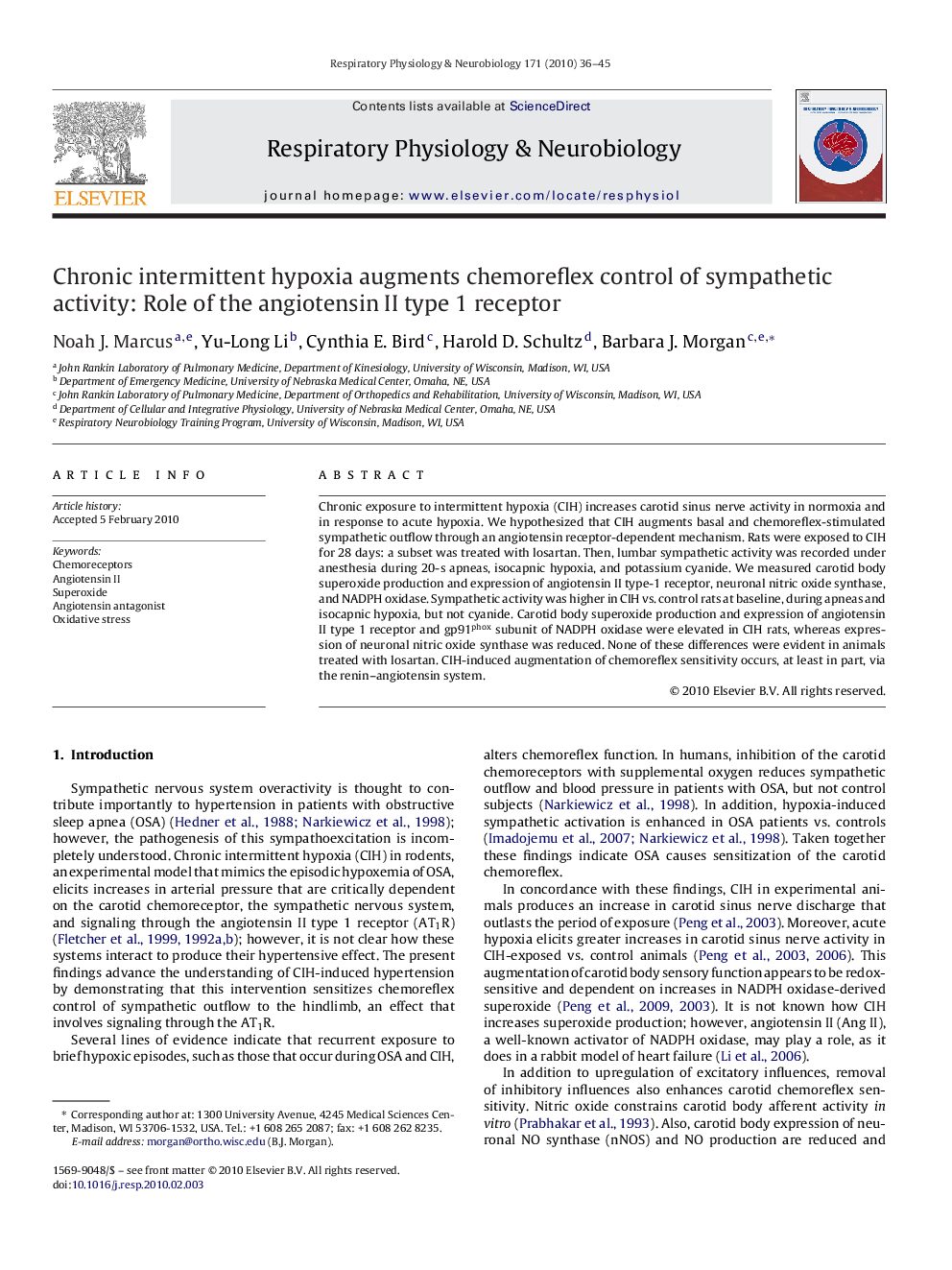| Article ID | Journal | Published Year | Pages | File Type |
|---|---|---|---|---|
| 2847709 | Respiratory Physiology & Neurobiology | 2010 | 10 Pages |
Chronic exposure to intermittent hypoxia (CIH) increases carotid sinus nerve activity in normoxia and in response to acute hypoxia. We hypothesized that CIH augments basal and chemoreflex-stimulated sympathetic outflow through an angiotensin receptor-dependent mechanism. Rats were exposed to CIH for 28 days: a subset was treated with losartan. Then, lumbar sympathetic activity was recorded under anesthesia during 20-s apneas, isocapnic hypoxia, and potassium cyanide. We measured carotid body superoxide production and expression of angiotensin II type-1 receptor, neuronal nitric oxide synthase, and NADPH oxidase. Sympathetic activity was higher in CIH vs. control rats at baseline, during apneas and isocapnic hypoxia, but not cyanide. Carotid body superoxide production and expression of angiotensin II type 1 receptor and gp91phox subunit of NADPH oxidase were elevated in CIH rats, whereas expression of neuronal nitric oxide synthase was reduced. None of these differences were evident in animals treated with losartan. CIH-induced augmentation of chemoreflex sensitivity occurs, at least in part, via the renin–angiotensin system.
